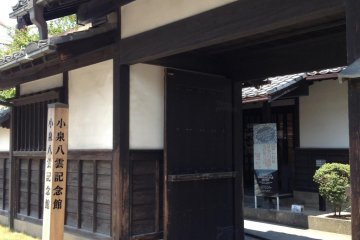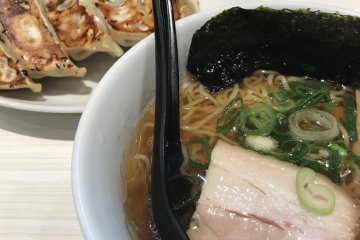
Lafcadio Hearn Museum, Matsue City
Louise WaghornThe Lafcadio Hearn Museum offers not only a glimpse into a fascinating man's life and works but an introduction to a never before seen side of Japan!

The Lafcadio Hearn Memorial Museum is dedicated to the British explorer Patrick Lafcadio Hearn (Koizumi Yakumo) who came to Japan in the 1800s. The museum opened in 1934, 30 years after Hearn's death, and renovated and expanded in 2016. Hearn naturalized as a Japanese citizen after marrying Koizumi Setsu in 1896, the daughter of a Matsue samurai.
During the fifty-four years of his life he created thirty works, including the well-known “Kwaidan. Strange Stories and Studies from Japan, ”which he wrote in his later years. Hearn's works had a decisive influence on the western image of Japan in the early 20th century. The life of Hearn is presented as well as his accomplishments and ideas.
From JR Matsue Station:
Lakeline Bus approx. 16 min. Get off at “Lafcadio Hearn Memorial Museum”.
Matsue City Bus approx. 18 min. Get off at “Shiominawate”, 6 minute walk.
Ichibata Bus approx. 20 min. Get off at “Shiominawate Iriguchi”, 1 minute walk.
20-minute walk from Ichibata Electric Railways Matsue Shinjiko Onsen Station

The Lafcadio Hearn Museum offers not only a glimpse into a fascinating man's life and works but an introduction to a never before seen side of Japan!

If you're headed to the Matsue History Museum, you have to pay a visit to the on-site cafe known as Kissa Kiharu. The cafe serves a range of beverages, and some beautiful handcrafted wagashi that look almost too good to eat!

Ramen Dining Naseba Naru Kakeru is located inside Matsue Station, and provides an easy to navigate menu and experience - particularly for international travelers.

Matsue Castle (松江城, Matsuejō) is the centerpiece of Matsue’s well-preserved castle town. Completed in 1611, Matsue Castle is one of only 12 original castles remaining in Japan—and one of just five officially designated a National Treasure. Built to withstand war and sieges, the castle survived unscathed and remains remarkably well preserved in the modern day. Find that perfect spot and enjoy the scenery or sail around the castle’s moats as if it were still the Edo Period. In a short excursion around the castle, you can see and enter many former samurai residences which play new roles as museums or visit the 200-year-old Meimei-an teahouse and gardens for a truly majestic view of the castle.

Neither Matsue nor Shimane Prefecture are known for matcha production, yet Matsue has become known as one of Japan’s three big “Tea Cities” due to the people’s love of and pride in their tea culture.

Walking along Shiomi-nawate street, the traditionally walled houses create and Edo period atmosphere. A finely preserved samurai residence, open to public viewing.